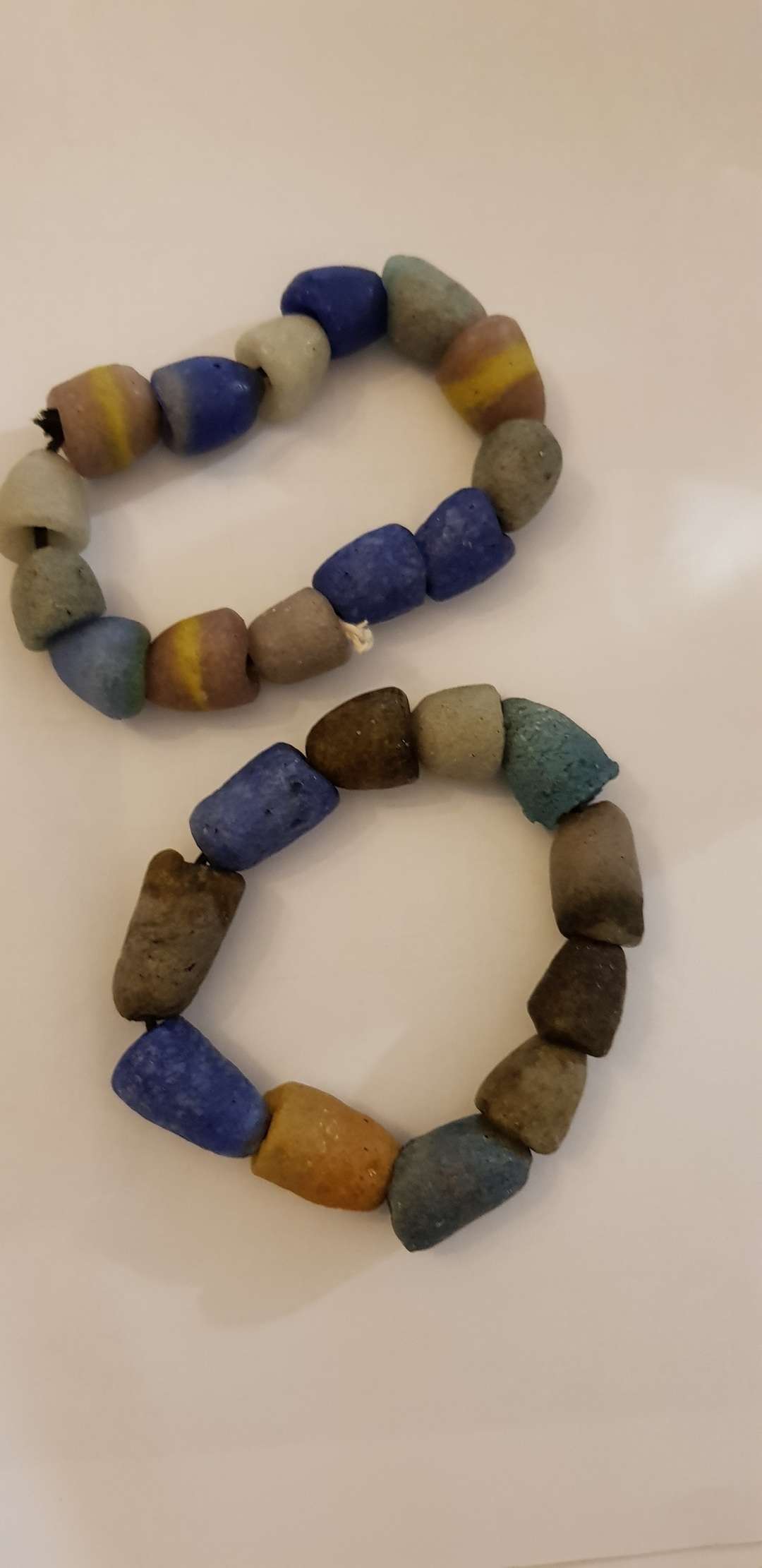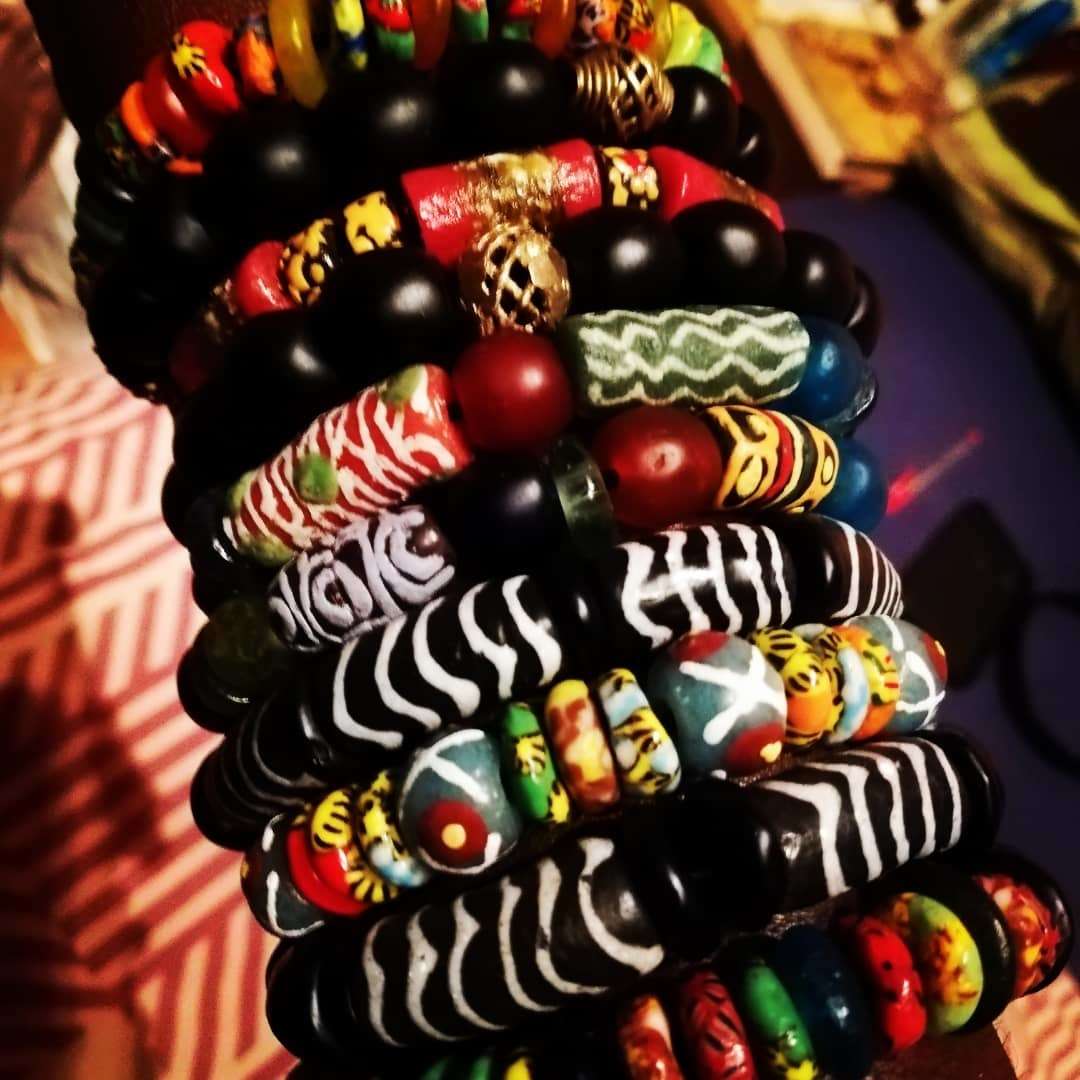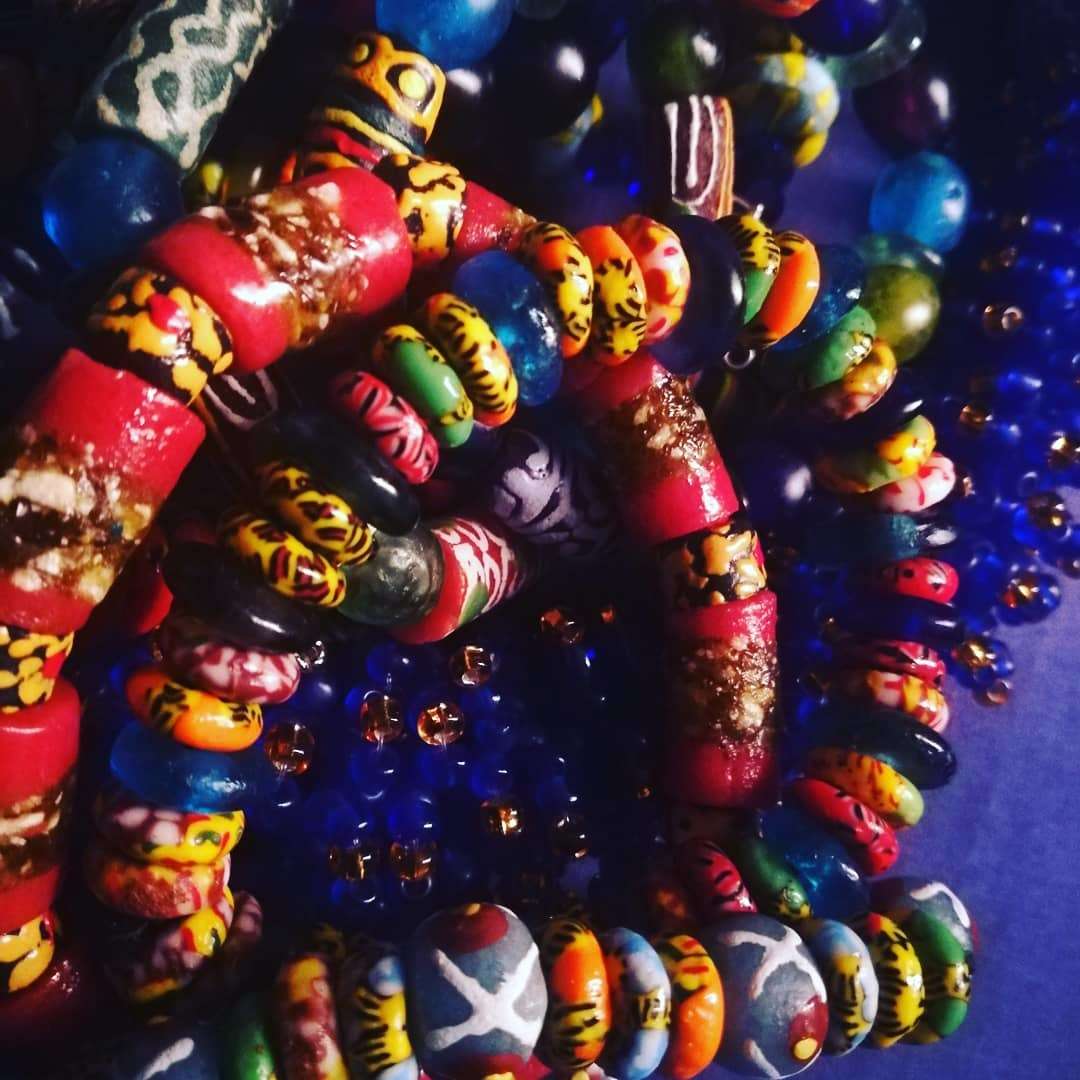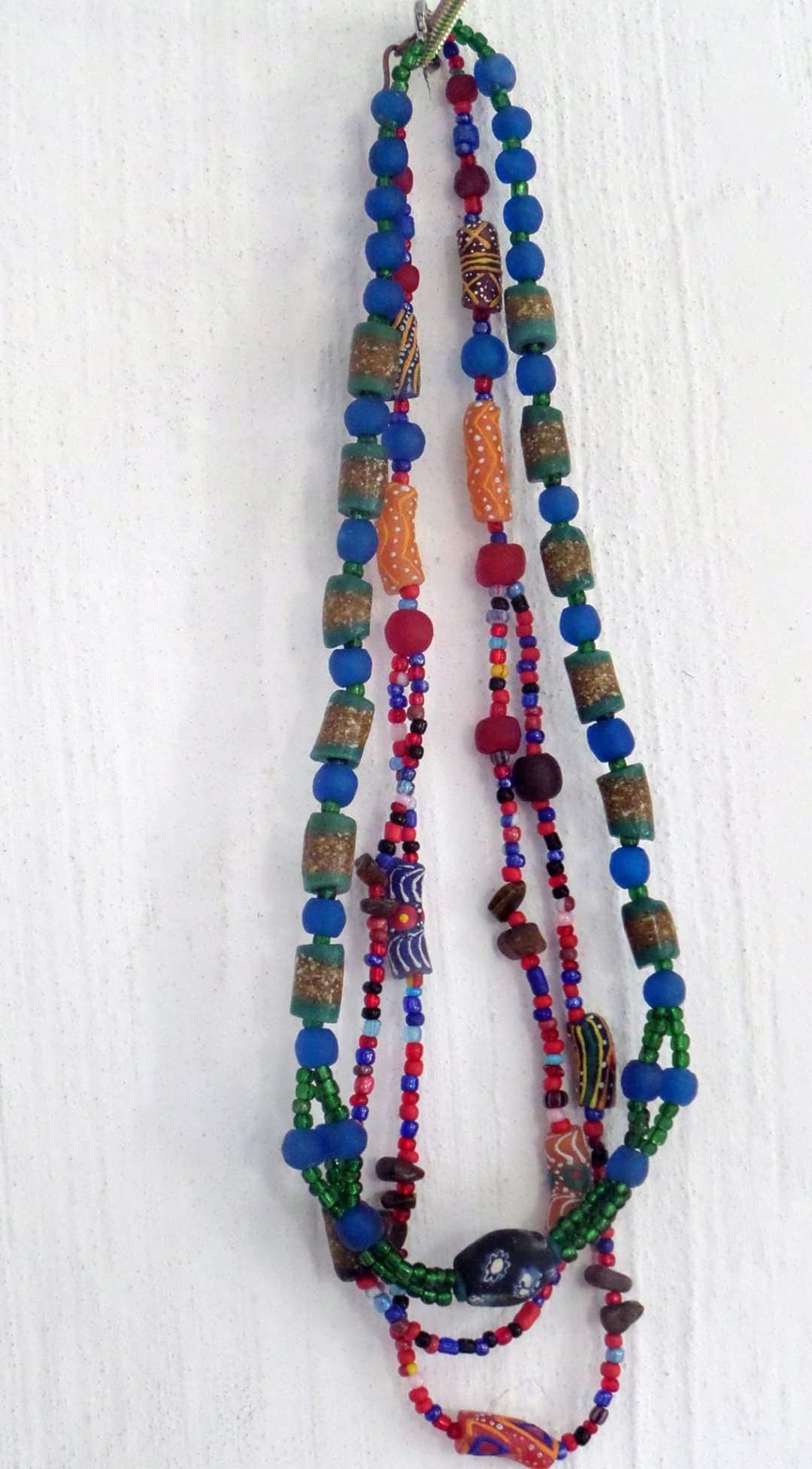Group Culture Coordinator and Researcher Rukariro Katsande weighs in on the significance of beads in African culture…

Part 1 – Materials and Origin
Beads are among the most intriguing and important symbols in African culture, past and present.
The materials used in making beads/beadwork are of the largest variety, from bone to glass. The colours and sizes, the significance of the materials chosen, the placement of beads (on the body, clothing or articles) among other uses, and of course the “subjectivity” of the person using beads denote perspective, experience, feelings, beliefs, desires, and/or power. Subjectivity is the “sense of self” which influences and informs people's judgments about truth or reality, especially on the topic of beads and beadwork.

The origin of beads and beadwork in Africa dates back to the beginning of any civilization documented in archaeological history, some say as far as 10,000 BC. Material used to make the beads is useful to determine the technological ages, for dating local initiatives as well as foreign contributions to the art form.
There has been much dispute as to where the more advanced technologies originated, however ample evidence points to a parallel universal development, and an abundance of natural resources required for the making of for example, glass beads in Africa.

On this continent much beadwork still consists of natural material such as bone, coral, horn, ivory, seeds, shells, stones and pearls, which places emphasis on the beadwork’s meaning. In contemporary times beads are also produced from synthetic materials like glass, plastic and alloy metals. Today’s sources for synthetic beads are China, Hungary, India and Poland. In southern Africa, important historical sites where beads have been found include Mapungubwe in South Africa and Great Zimbabwe just to the north. Countries include Botswana, Mozambique, South Africa and Zimbabwe.
The uses of beads and beadwork differ widely across the continent, and include…
Prayer or spiritual representation – Judaism is possibly the only faith that does not use beads for prayer or divine communication or representation. Many sangomas/n’angas or traditional healers wear distinctive amulets and beadwork which aid in identifying them and their work, or for help during their work. They originate beadwork for anyone who feels that they need support in particular spiritual issues or areas of their life. Bead colours are usually chosen by the sangoma in line with an individual’s characteristics and particular ailments or troubles. In most known common practices, novice sangomas wear single strings of white beads around their heads, wrists, elbow and ankles, while experienced older healers have the right and privilege to wear more opulent and elaborate bead work with variant colours and materials including feathers. Beads are also used in rituals, thrown on a mat combined with bones, dice, stones and pieces of wood. By the flick of a wrist, they can determine one’s fortune. Beads and seeds can be contained in gourds which are shaken to ward off evil spirits or to play ritual/festive music (leg rattles, hosho for the mbira, or in church choirs). Beads are used as part of African and European religious rituals, increasing their value and respect for them.

Part 2 – Uses of Beads
Beads are among the most intriguing and important symbols in African culture, past and present. The uses of beads and beadwork differ widely across the continent, and include…
Anti-tension devices – worry beads are used in Greek (Cretian) culture for relaxation (komboloi), enjoyment, and generally passing the time, as an amulet, to guard against bad luck, by people who wish to limit addictive habits (smoking), or as a mark of power and social status. This is especially true in the case of expensive worry beads made of silver or amber. Other devices include various massage therapies.
Currency – aggri beads from Ghana were used for exchange and as a way of payment during early trade in Africa. Europeans first collected aggri beads from the West Coast of Africa in the 15th Century. Beads were also used in the slave trade. (Here too, beads could determine one’s fortune!)
Medicinal purposes – aggri beads, dzi beads, echinacea beans and amber beads are examples which are either consumed or adorned. Some medicines are prepared into an amulet which is beaded around the outside. This is an old form of traditional medicine that is worn. Some beads and beans/seeds are dietary supplements. In many African communities, a bracelet with beads is the first thing a new born baby wears for spiritual and physical protection and one of the last adornments used to bury the dead. Animals have been known to be adorned with beads for ritual practices aimed at appeasing spirits or causing ill-health in families.
Gaming – some examples are owari beads for mankala/mancala (an old African game), the Bead Trade Game, Hama beads and the Bead Maze Roller Coaster among numerous others.
Adornment – historically, beadwork was the insignia of tribal royalty. This practice has decentralised gradually and developed broader meaning in society. In contemporary southern Africa, beads and seeds have experienced a revival in popularity and are easily visible in everyday dress patterns which incorporate cultural as well and individual expressions. Culture is dynamic, and is just as much individual as it is a societal or communal expression. New styles and uses are being incorporated and fused with traditional representations, which still offer authentic African origin and expression.
Used for souvenirs and to raise awareness – contemporary uses now include beaded souvenirs made of wire or fishing twine, such as domesticated and wildlife creatures, decorative and awareness bangles and bracelets, toys and figurines, the list continues to grow with the artists’ imaginations. Our very own “Romy” the rhino is one such example of unique creativity from the continent used for corporate cultural representations. It took an approximate one and a half million beads to raise and underline a very crucial conservation issue. Although “Romy” is the second such creation after the elephant at OR Tambo airport, our rhino is very well-travelled.
Part 3 – More Uses of Beads
In South Africa, Zulu 'love letters', where the colours reflect the ardour and nature of one’s feelings, are still largely popular. The beadwork tradition continues as living art. Elaborate beadwork costumes and body ornaments continue to be created for daily use, in traditional ceremonies, or to celebrate matrimony and the rites of passage from infancy to adulthood. Their use also provides an income and livelihood for hundreds of street salesmen and craftswomen who create beaded dolls, necklaces, anklets, collars and belts so dazzling they are simply irresistable.
Waist beads have a long history in Africa and are worn for various reasons and purposes. They are a symbol and celebration of womanhood, sexuality, femininity, fertility, healing, spirituality, body shaping, first menses, protection, seduction, and wealth, amongst other things.
The meaning of the colours and different shapes of beads varies with every community and they can be thought of as visual dialects. Each bead, colour, and shape relays a different message depending on the giver/receiver.
Traditionally, mothers adorned their daughters with waist beads during their first menstruation as a rite of passage into womanhood. The beads symbolised a young lady’s fertility, developing body, and her sexuality. A young lady’s beads were adorned with bells to let possible suitors know that she was at the right stage for reproduction. In many cultures the waist beads symbolised a young woman’s purity and were only to be taken off by her husband on their wedding night. Most waist beads are worn under clothing and are a private affair.
• Waist beads were and still are worn for seduction. For some, the beads possess intimate appeal and can provoke desire. Some women are said to lace their beads with charms and fragrances that are recommended to be irresistible to the opposite sex. Some women wear different shapes of beads during intimacy as a means of enhancing the sexual experience of her and her partner. The beads to some women resemble what lingerie is to Western women. Wives would often lure their husbands with the rattle of the beads or use them as a means to communicate their fertility during the month.
• When stones are added, waist beads take on healing qualities. Depending on the ailment or what needs to be enhanced (i.e. love, psychic powers, balancing), various semi-precious stones can be included in the design of waist beads.
• Most importantly, waist beads are also an instrument of body shaping. The strung beads alert women of their weight gain or if they are pregnant. Unlike clothing, the strings do not stretch; they break or roll up the waist with increased girth. So in an absence of scales as a means of weight measurement, the beads are used by women to shape their bodies and monitor weight.
Universally, the appeal of beads and beadwork will continue to thrive as both a cultural expression and tourist attraction.

Let’s plan your next journey
Ready?
When we say we’re there every step of the way, we mean it, literally. From planning the perfect circuit, to private inter-camp transfers on Wilderness Air, and easing you through Customs. We’re with you on the ground, at your side, 24-7, from start to finish. Ready to take the road less travelled? Contact our Travel Designers to plan an unforgettable journey.